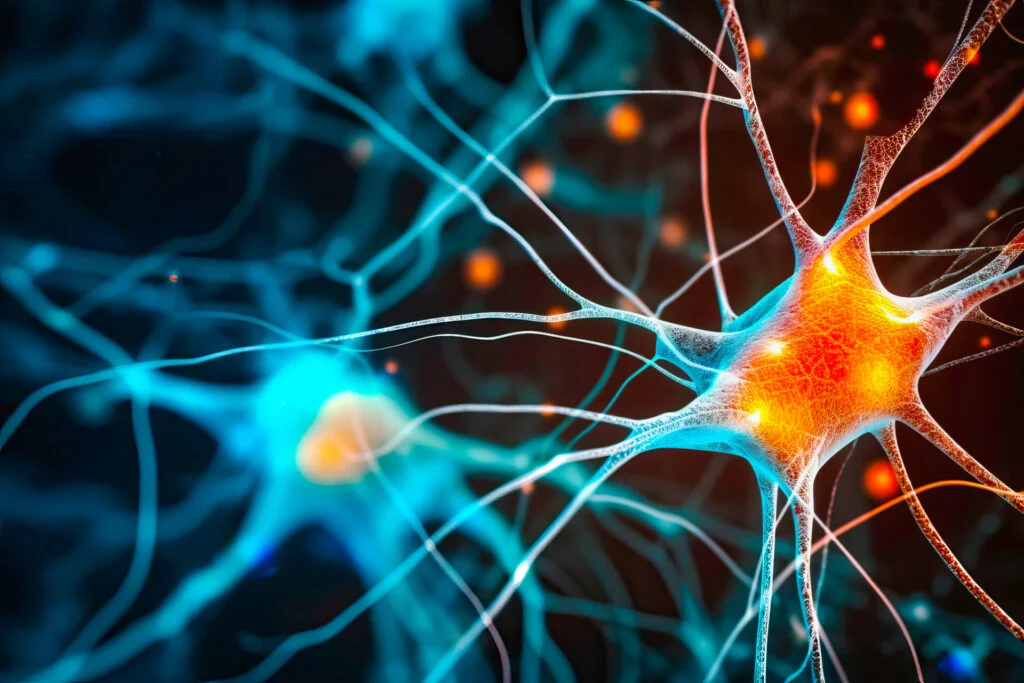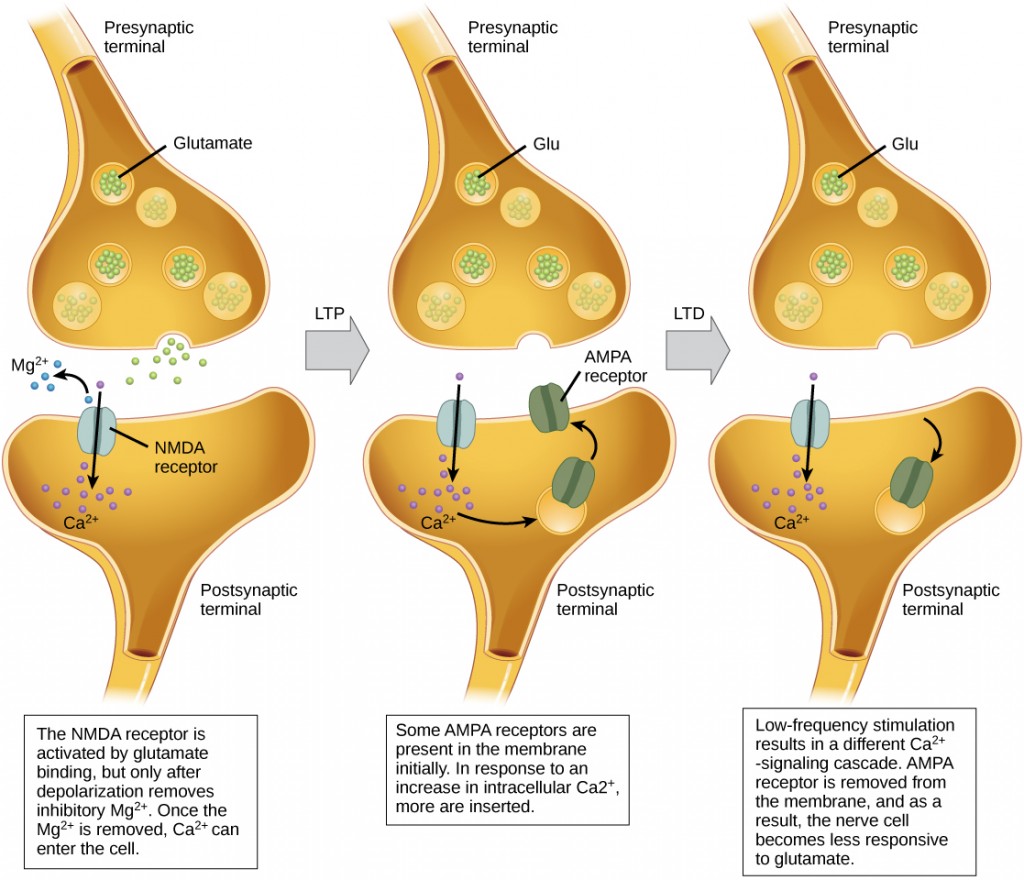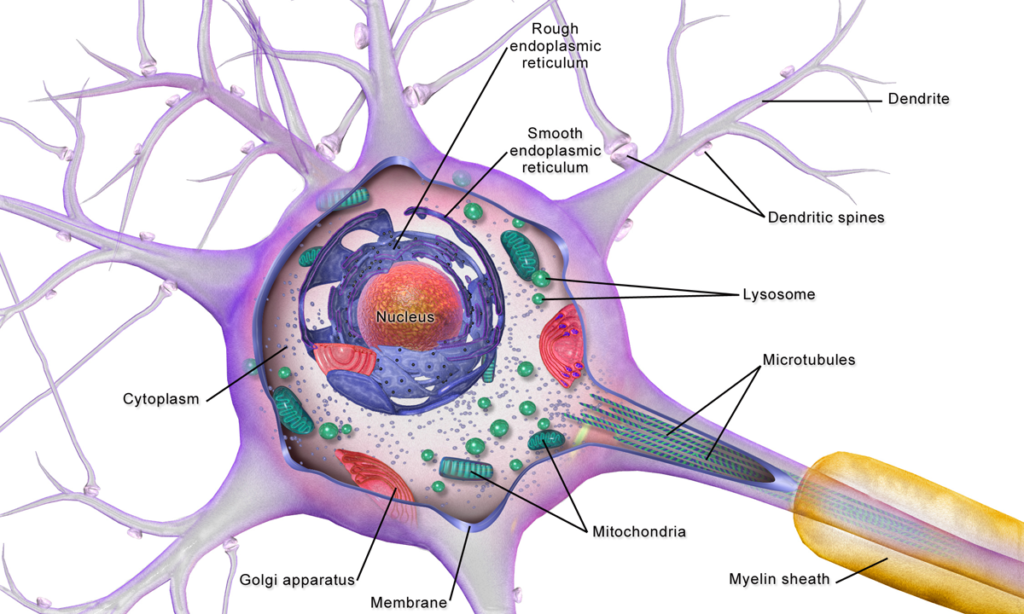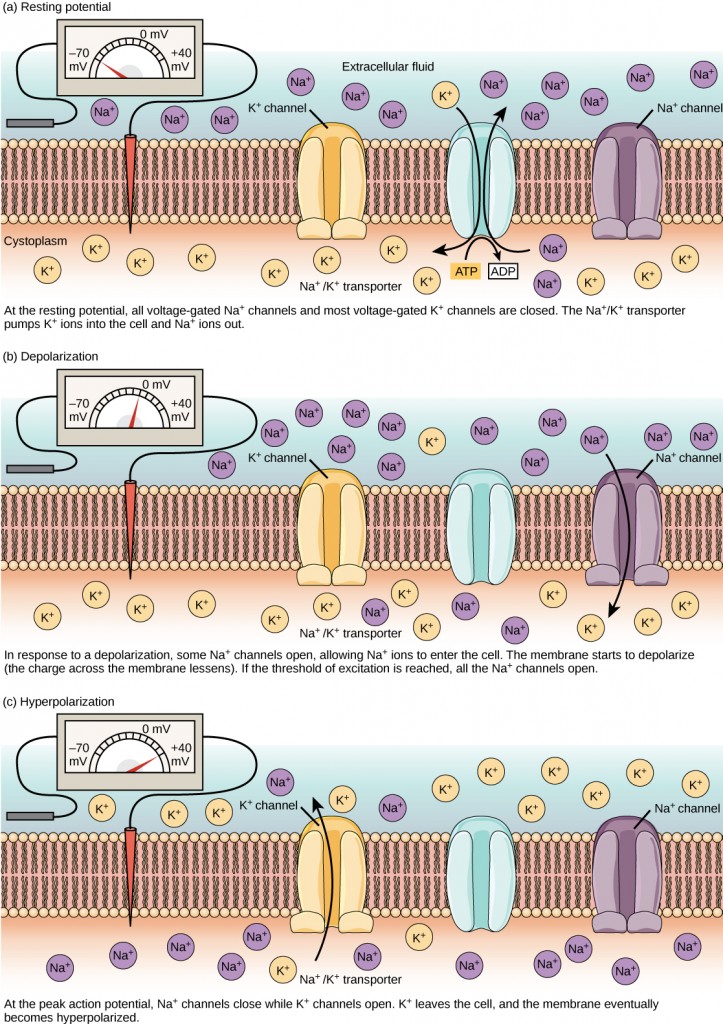Secrets of Brain Neurons:

How the brain neurons communicate together?
The neurons in the brain communicate with each other through a complex process involving electrical and chemical signals. Here’s a brief overview of how brain neurons communicate:
- Electrical signals: Neurons generate electrical signals called action potentials, which are rapid changes in the electrical potential across the neuron’s membrane. These action potentials travel along the neuron’s axon towards its terminal branches.
- Chemical signals (neurotransmitters): At the end of the axon, there are specialized structures called synapses, which are tiny gaps separating the axon terminal from the dendrites of another neuron or a target cell.
- Synaptic transmission: When an action potential reaches the axon terminal, it triggers the release of chemical messengers called neurotransmitters into the synaptic cleft (the gap between the neurons).
- Neurotransmitter receptors: The neurotransmitters released into the synaptic cleft bind to specific receptors on the receiving neuron’s dendrites or cell body.
- Postsynaptic response: The binding of neurotransmitters to their receptors can either excite (depolarize) or inhibit (hyperpolarize) the receiving neuron, depending on the type of neurotransmitter and receptor.
- Integration of signals: A neuron receives thousands of synaptic inputs from various other neurons. It integrates these inputs, and if the net excitatory input exceeds a certain threshold, the neuron generates a new action potential, which can then propagate to other neurons.
This process of synaptic transmission and integration of signals allows neurons to communicate with each other, forming complex neural circuits and networks that underlie various brain functions, such as perception, cognition, memory, and behavior.
It’s important to note that the communication between neurons is not just a simple one-way process; it involves intricate feedback loops, modulation by other neurons, and complex temporal dynamics, which contribute to the brain’s remarkable computational capabilities.

How the brain neuron be either excitatory or inhibitory or what else?
Neurons in the brain can be classified broadly into two main functional types based on the effect their neurotransmitter release has on the target neurons: excitatory neurons and inhibitory neurons. Additionally, there are also neuromodulatory neurons that can modulate or regulate the activity of other neurons.

- Excitatory neurons: Excitatory neurons release neurotransmitters that increase the likelihood of the target neuron generating an action potential or firing. The primary excitatory neurotransmitter in the brain is glutamate. When glutamate binds to its receptors on the target neuron, it causes depolarization (an increase in the positive charge inside the neuron), bringing the neuron closer to its firing threshold.
- Inhibitory neurons: Inhibitory neurons release neurotransmitters that decrease the likelihood of the target neuron firing an action potential. The primary inhibitory neurotransmitter in the brain is gamma-aminobutyric acid (GABA). When GABA binds to its receptors on the target neuron, it causes hyperpolarization (an increase in the negative charge inside the neuron), making it more difficult for the neuron to reach its firing threshold.
- Neuromodulatory neurons: Neuromodulator neurons release neurotransmitters or neuromodulators that can modulate or regulate the activity of other neurons, but they do not directly cause excitation or inhibition. These neuromodulators can alter the properties of neurons, such as their excitability, synaptic strength, or neuronal plasticity. Examples of neuromodulators include dopamine, serotonin, norepinephrine, and acetylcholine.
The interplay between excitatory, inhibitory, and neuromodulator neurons is crucial for the proper functioning of the brain. This balance allows for the precise regulation of neural activity, enabling complex computations, information processing, and the coordination of various brain functions.
It’s important to note that while some neurons are predominantly excitatory or inhibitory, their effects can sometimes be more complex, depending on the specific receptors and the target neuron’s state. Additionally, some neurons can release both excitatory and inhibitory neurotransmitters, adding further complexity to the neural communication processes in the brain.

How can excitatory or inhibitory neurotransmitter expressed on human behavior?
The balance between excitatory and inhibitory neurotransmitters in the brain can significantly influence human behavior and cognitive functions. Here are some examples of how these neurotransmitters can be expressed in human behavior:
Excitatory neurotransmitters (e.g., glutamate):
- Learning and memory: Glutamate plays a crucial role in synaptic plasticity, which is the ability of neural connections to strengthen or weaken over time, facilitating learning and memory formation.
- Attention and focus: Glutamate is involved in the activation of brain regions responsible for attention and concentration, enabling focused behavior and cognitive processing.
- Excessive excitation: Imbalances in glutamate levels or dysfunction in its receptors can lead to excessive excitation, which has been linked to neurological conditions like epilepsy, characterized by seizures and abnormal brain activity.

Inhibitory neurotransmitters (e.g., GABA):
- Anxiety and stress regulation: GABA is the primary inhibitory neurotransmitter in the brain, and its dysfunction has been associated with anxiety disorders, panic attacks, and heightened stress responses.
- Sleep and relaxation: GABA plays a role in promoting sleep and relaxation by inhibiting neuronal activity in specific brain regions, allowing for a calm and restful state.
- Impulsivity and behavioral control: Inhibitory neurotransmitters like GABA are involved in regulating impulsivity and behavioral control, as they modulate the activity of brain regions responsible for decision-making and impulse control.
Both excitatory and inhibitory neurotransmitters:
- Mood regulation: Imbalances or dysregulation of both excitatory and inhibitory neurotransmitters have been implicated in mood disorders like depression and bipolar disorder, affecting emotional regulation and stability.
- Cognitive flexibility and decision-making: The interplay between excitatory and inhibitory neurotransmitters is crucial for cognitive flexibility, allowing for the adaptation of behavior based on changing environmental demands and the evaluation of potential outcomes.
- Motor coordination and movement: Excitatory and inhibitory neurotransmitters work together to regulate the activity of motor neurons, enabling coordinated and smooth movements.
It’s important to note that the effects of these neurotransmitters on behavior are complex and often involve intricate networks of brain regions and multiple neurotransmitter systems working in concert. Additionally, individual differences in neurotransmitter levels, receptor sensitivity, and neural connectivity can contribute to variations in behavior and cognitive functions among individuals.


